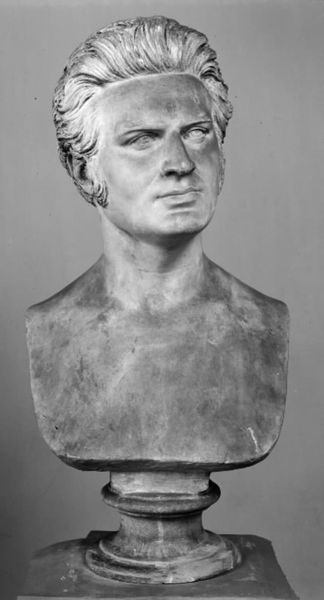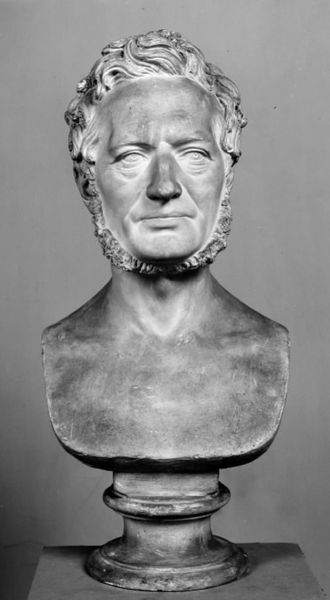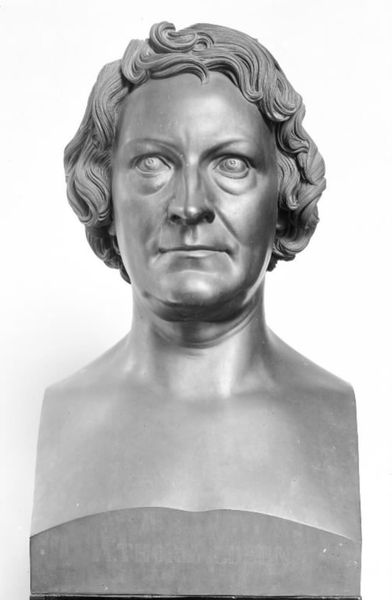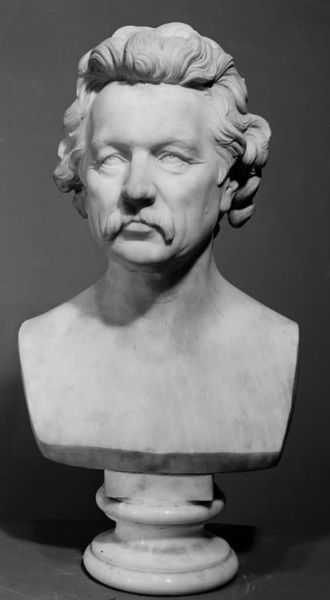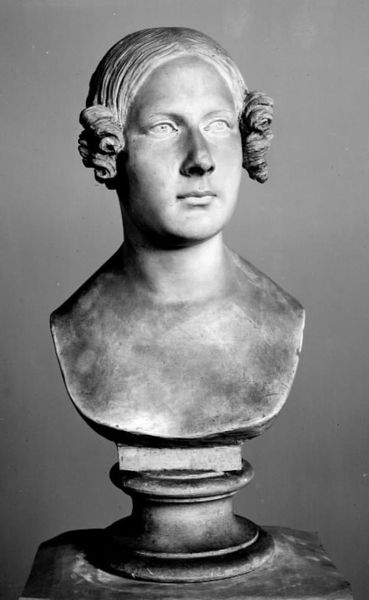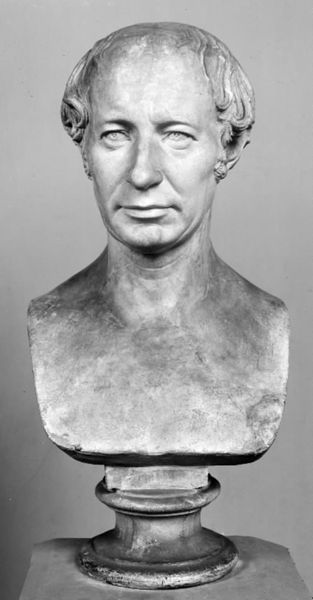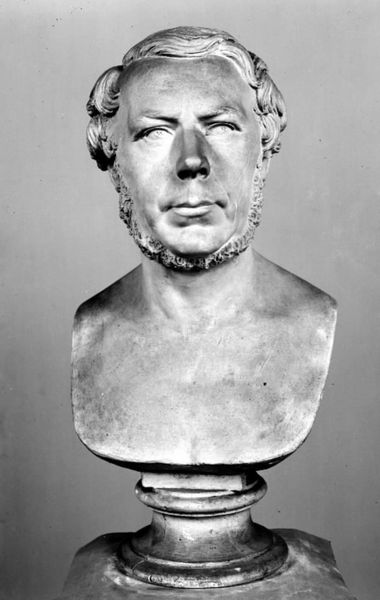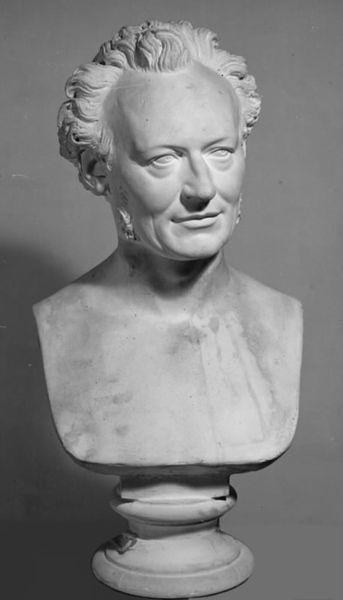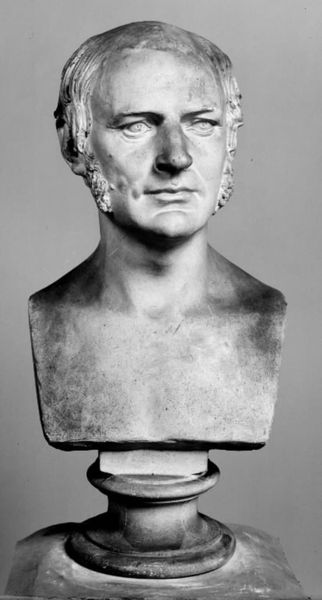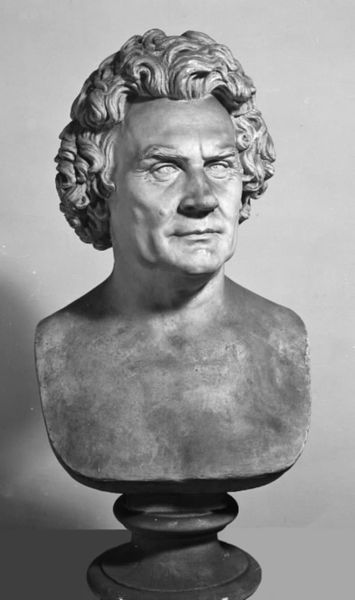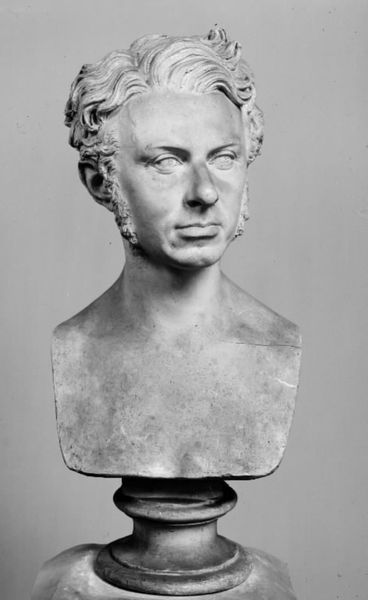
sculpture, marble
#
portrait
#
neoclacissism
#
portrait
#
sculpture
#
academic-art
#
marble
#
realism
Dimensions: 60.8 cm (height) (Netto)
Curator: The determined gaze in this portrait bust by H.W. Bissen immediately draws you in. The artwork, titled "Arkitekten Jørgen Hansen Koch," dates from 1847-1848 and is on display here at the SMK, Statens Museum for Kunst. Editor: My first thought is about the starkness. It is crafted from marble, obviously, which contributes to the sense of austere elegance and solidity, doesn't it? I imagine the sheer labor that goes into transforming that raw material. Curator: Absolutely. And that material choice is critical to understanding the piece's social significance. Marble, long associated with classical art and power, elevates Koch’s status, signaling the high regard in which architects were held within Danish society at this time. This wasn't just craft; it was nation-building. Editor: That connection with the classical world is obvious; but I would still bet that it's about material properties as well. You could almost feel the chill radiating from the stone, this hardness suggesting an unflinching character, as though Koch's spirit has somehow become fossilized. Do you feel like his direct gaze conveys that stoicism? Curator: He certainly appears resolute. We also have to appreciate how Bissen, who became a leading figure of the Danish Golden Age, used Neoclassical portraiture as a tool of national identity, celebrating prominent figures who were shaping the very fabric of Danish society through architecture and design. Editor: What do you mean shaping "the very fabric?" That's an evocative metaphor. Is there any textual evidence that Bissen was trying to assert any particular Danish character into the sculpting process itself, and even into the material he was using? Curator: In his other portraits as well, we see how Bissen employed subtle realism. This gives the figure an accessibility—while still conveying an air of authority. Koch's status, enshrined in the material of the bust, helped reinforce the importance of architects in modernizing Copenhagen and establishing its urban identity. It suggests an attempt at forging the Danish society's modern consciousness. Editor: So it’s this public role and that interplay between social image-making and concrete materiality that resonates with me, reminding us that even in portraiture, the artist, subject, and the materials they manipulate are constantly speaking to broader cultural narratives. Curator: I find myself returning to Koch’s almost defiant gaze, a testament to the individual contributions shaping a nation's self-image through civic work, architecture, and artistry, all working in concert.
Comments
No comments
Be the first to comment and join the conversation on the ultimate creative platform.

